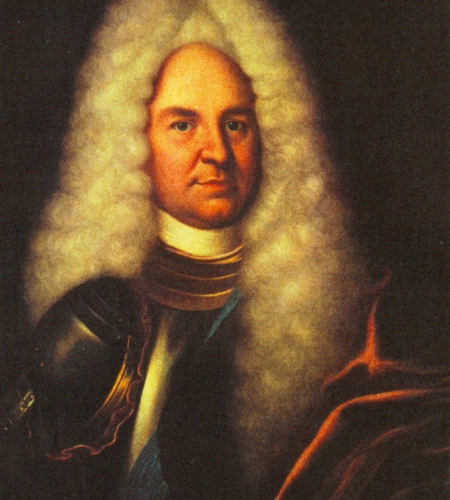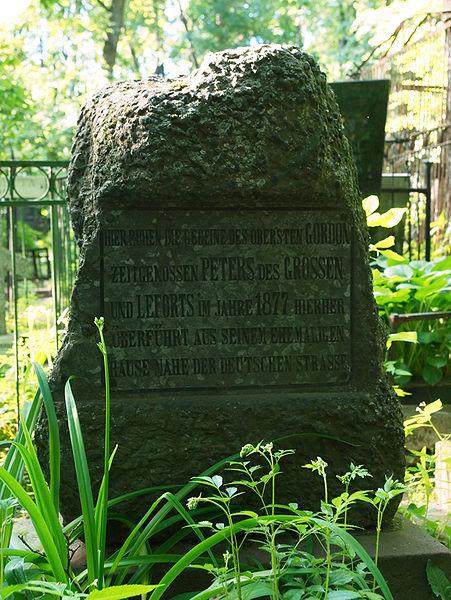 Tartan is a checkered cloth woven in a certain order of colours and stripes, the weft [threads across the cloth] being the same as the warp [threads along the cloth], the resulting pattern belonging to a certain Scottish clan. The dyes used were, in the beginning, mainly vegetable dyes obtained from local plants. Generally tartans from the East of Scotland were green and those from the West red. Nowadays aniline dyes are used giving much more brilliant colours.
Tartan is a checkered cloth woven in a certain order of colours and stripes, the weft [threads across the cloth] being the same as the warp [threads along the cloth], the resulting pattern belonging to a certain Scottish clan. The dyes used were, in the beginning, mainly vegetable dyes obtained from local plants. Generally tartans from the East of Scotland were green and those from the West red. Nowadays aniline dyes are used giving much more brilliant colours.
The Clan system is the most ancient tradition in Scotland. The Clan is a group of families with a particular surname and the common ancestor. Sometimes the Clan may have more surnames in it than the main one, in which case each of those is called a Sept of that clan.
Each clan has a tartan pattern appointed by the chieftain to be worn for kilts and other garments. It can be woven in a small or large Sett. The wearing of the tartan of other clans is considered to be a social violation. A tartan is easy to weave, using a twill weave, the resultant cloth looking beautiful. It is popular not only in Scotland but all around the world. However it is only in the British Isles that the tartan serves as a means of ancestry identification in Society and has eventually become a heraldic category in itself.
Despite its ancient history (the first records date back to the Ancient Romans), tartan was described and researched only in the 18th century, when it had become necessary to restore the Scottish traditions, forgotten in the course of three decades since the defeat of Scotland at Culloden in 1746.
It was back then when the Scots were forbidden to wear kilts and arms, including bagpipes. However, in 1776 the famous researcher William Wilson had gathered [or invented] more than 200 patterns which were subsequently adopted by clan chieftains. He was ably assisted by the famous patriot Sir Walther Scott, tartan eventually being given the Royal seal of approval and becoming very popular.
Throughout the centuries the number of tartans has been growing and to-day there are more than 6000 of them in the official register. Nowadays they belong not only to clans but to any club, society or company that applies to The Lord Lyon Herald for a design.
«The Pipes & Drums of St. Petersburg» have chosen the tartan of the famous Clan Gordon in honour of Patrick Leopold Gordon — the true hero of Russia, battle general and admiral, the great fortification specialist, diplomat and military tutor of Peter the Great. According to the legend, at the end of his life Gordon had announced the right of every Russian citizen to wear the tartan of his clan.
 Patrick Leopold Gordon was born on March 21, 1635 in the Northern Highlands of Scotland and belonged to the impoverished family of this famous clan. After the victory of Oliver Cromwell the Gordons, who supported the executed King Charles 1st, were deprived of their property and the right to serve the new king. Patrick had to leave Scotland and join the army of the Swedish king Karl X, who was then at war with Poland. During the next six years the highlander had to more than once change Swedish colours to Polish and vice versa while at the end of the day he found himself in the army of Moscow czar Alexey Mikhailovich (father of Peter the Great) where lots of Scottish royalists were serving by then.
Patrick Leopold Gordon was born on March 21, 1635 in the Northern Highlands of Scotland and belonged to the impoverished family of this famous clan. After the victory of Oliver Cromwell the Gordons, who supported the executed King Charles 1st, were deprived of their property and the right to serve the new king. Patrick had to leave Scotland and join the army of the Swedish king Karl X, who was then at war with Poland. During the next six years the highlander had to more than once change Swedish colours to Polish and vice versa while at the end of the day he found himself in the army of Moscow czar Alexey Mikhailovich (father of Peter the Great) where lots of Scottish royalists were serving by then.
Because of his major military experience and deep knowledge of warfare tactics, Gordon immediately received the rank of a major, and that was while other foreign officers were enlisted only as privates. His initials Patrick Leopold were transformed into Russian Peter Ivanovich and his lodging was in a German village. He brought with him the library consisting of antique authors’ publications and military literature. Also Peter Ivanovich ordered other books and newspapers from Great Britain as well as received updates about the progress in military, industrial and scientific spheres. Later on, all that had formed a basis of the reforms of Peter I.
Historically unprecedented promotion of a Scottish catholic in Moscow began after the plot of the old Czar guards (Streltzy) had been suppressed with the help of his regiment, which Gordon brought into Russia for reinforcing Czar Peter’s army. Under the service of the young monarch, Gordon was teaching Preobrazhensky and Semyonovsky regiments; prepared the plans of fortresses; supervised fortification works; created army drill codes and campaign plans as well as assisted to build the very first ships of the Russian navy. For his multiple service achievements Gordon received the rank of Admiral and the ultimate achievement in the career of Peter Ivanovich was his participation in Azov campaigns at the end of which Peter I has awarded him a mansion with a plot of hundred peasantry yards.
 It was in 1698 when Admiral Gordon saved the throne of Russian reformer for the second time. In the battle under the walls of Voskresensky Monastery the troops under the command of Gordon suppressed the second Strelzy uprising. At the end of the same year Gordon fell ill, but nevertheless continued to help Peter I. It was on November 29, 1699 when the valiant warrior passed away with the monarch being at his bed until the very last breath. Gordon was buried in the German village under the altar of the very first catholic monastery in Russia. At the tomb of his teacher Peter I said the famous words: «I gave you just a plot of land, while you had given me Russia». In over a hundred years the remnants of Admiral Gordon were brought to Moscow to be buried with honours at Vvedensky Cemetery.
It was in 1698 when Admiral Gordon saved the throne of Russian reformer for the second time. In the battle under the walls of Voskresensky Monastery the troops under the command of Gordon suppressed the second Strelzy uprising. At the end of the same year Gordon fell ill, but nevertheless continued to help Peter I. It was on November 29, 1699 when the valiant warrior passed away with the monarch being at his bed until the very last breath. Gordon was buried in the German village under the altar of the very first catholic monastery in Russia. At the tomb of his teacher Peter I said the famous words: «I gave you just a plot of land, while you had given me Russia». In over a hundred years the remnants of Admiral Gordon were brought to Moscow to be buried with honours at Vvedensky Cemetery.
Musicians of «The Pipes & Drums of St. Petersburg» wear with pride the tartan of Patrick Leopold Gordon and remember with honour his heroic deeds.